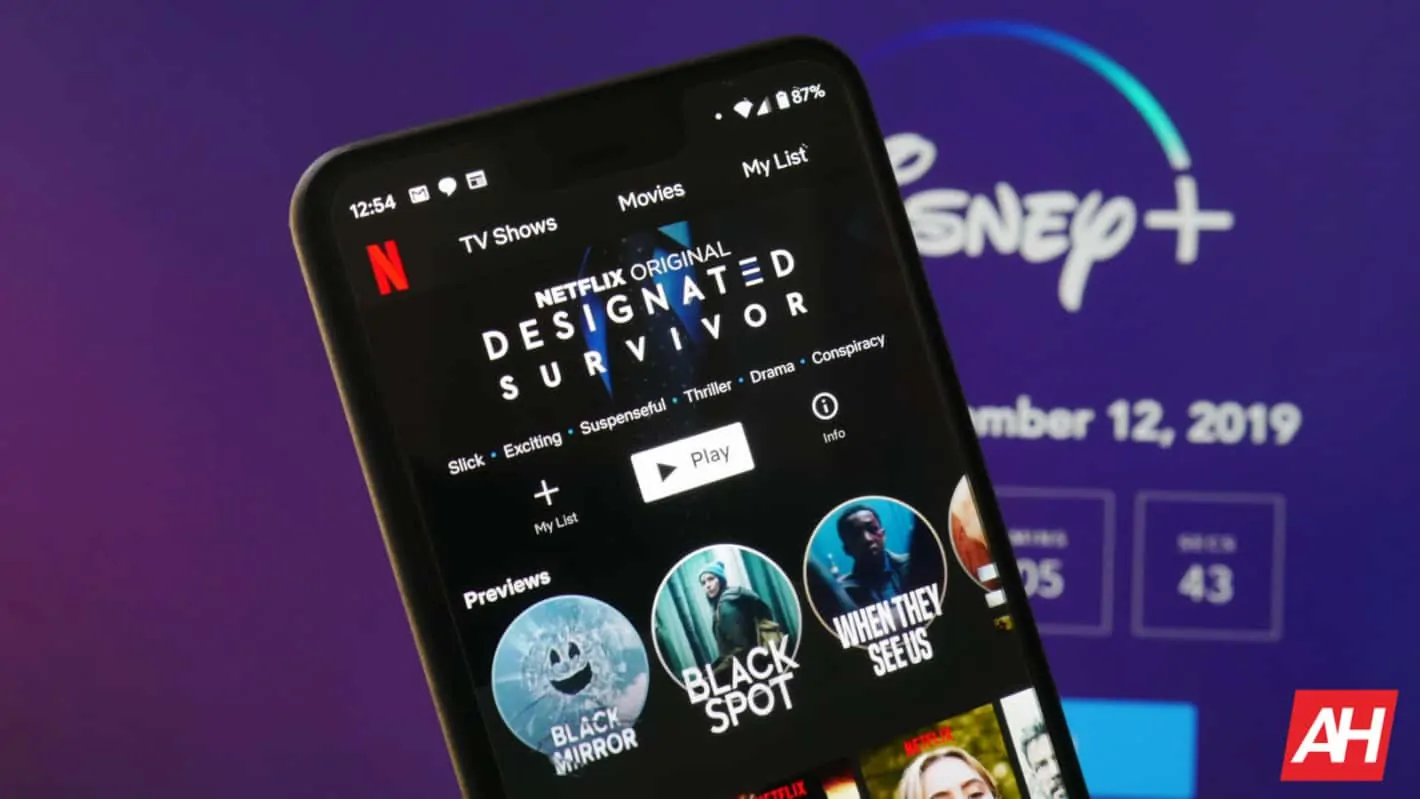Netflix is, and always has been an entity unto itself so the suggestion that a titan such as this is under threat seems ludicrous.
But stranger things (pun intended) have happened.
Cord cutting, the rise of the so-called “skinny” bundles, and streaming in general are not only reshaping the traditional TV market but also TV itself, and as part of that reshaping companies like Netflix are going to feel the pressure more than some others.
Netflix’s problem is not necessarily Disney or AT&T as companies, it is the state of the industry and the direction it is now moving in, and is best summed up as à la carte TV.
À la carte is coming
There’s been many references to à la carte TV recently with many commentators approaching the topic based on how far away we are today from a true à la carte industry. To focus on that aspect is to ignore the fact we are already on an à la carte road and accelerating more everyday.
It’s no longer a matter of whether true à la carte TV will arrive, but when.
For those still unsure about what exactly is meant by this phrase, à la carte TV is fundamentally no different to à la carte in the traditional sense – the option to order items separately as opposed to a set menu.
In TV land, packages and plans have always reigned and can be directly compared to those set menus. In the near future, users probably will still be able to order from a TV set menu, but that will no longer be a requirement. Arguably, price will be key in this sense.
Take Disney who’s now in control of ESPN, the upcoming Disney+ service and has effectively assumed control of Hulu. These are all à la carte options that you can subscribe to independently of each other. However, Disney will likely bundle all three together at some point and utilizing a bundled price discount to generate subscriptions.
Therefore, the concept of set menus in TV won’t disappear but they will change to where companies primarily offer their own internal bundled packages instead of a third-party service that bundles channels/content from one company/network with another.
WarnerMedia is no different. AT&T, who owns WarnerMedia already owns a bunch of live TV channels and those channels are already propping up DIRECTV NOW under its new plans. Those plans are, in effect, AT&T live TV plans along with some additional channels AT&T could not get rid of…yet.
But, that’s only one side of the WarnerMedia equation as like Disney, WarnerMedia is also looking to create its own mini-bundles to snare users in at a higher, collective price point.
The new WarnerMedia streaming service is due to launch later in the year (full launch early next year) and that will be a service which most likely brings together the HBO, Cinemax and Warner Bros. worlds.
Again, it is likely you will be able to continue to subscribe to HBO or Cinemax if that’s all you want, but AT&T looks set on making sure the price is so low that to subscribe to just one would not be worth it.
You can consider these mini-bundles the macro version of the à la carte TV approach.
But what does this all have to do with Netflix?
That’s simple, content.
In today’s world you can most likely subscribe to any one of the many TV distributors and still gain access to the same, or at least, very similar content. This maybe a TV show, a movie, documentary or whatever. This may also depend on the time with some distributors offering content at a certain time before the licensing runs out and it moves to another distributor – but the point is during a given period you would have access to the same content.
In tomorrow’s world, things won’t be so amicable and to understand the issue properly is to make a clear distinction between a content-first and platform-first company.
Disney and WarnerMedia are both content-first companies. Their services will be padded out almost exclusively with content they own.
Netflix in comparison is primarily a platform service that brings together content owned by other companies for easier digestion. Taking away live TV and Netflix is not that different to a cable provider.
As part of this new wave of ‘subscribe to me’ services, content-first companies will be looking to ensure the only place you can find their content is through their service. In Disney & WarnerMedia’s cases, that’s some really big name content providers. Think The Walt Disney Co., HBO, Warner Bros., Pixar, and much more.
Looking at specific title franchises and we are talking about some of the most well-known of all time – Game of Thrones, Star Wars, Harry Potter, Friends, The Matrix, Indiana Jones, Toy Story, Pirates of the Caribbean, Lethal Weapon, Friday the 13th, A Nightmare on Elm Street, Rocky, Lego, every Disney animation movie you can think of, the list just goes on and on.
Put simply, there will come a time when most, if not all of these franchises will not be available through third-party options, such as Netflix. And that’s a problem for Netflix as people want access to high profile content and irrespective of how old it is. High profile content is what sells services, and with those companies owning the content and also looking to serve the content directly to consumers, the game changes, massively.
Take Friends for example. In 2018 Netflix agreed to pay $100 million to WarnerMedia to extend the licensing for just one year. By cultural standards, Friends is an old show. By content standards, Friends was a show Netflix felt it could not be without out.
Netflix won’t be sucker-punched
Make no mistake, Netflix has known this was coming and has been making its own moves to be ready with content solving its content problem.
In the past years, Netflix has invested in, and released some of the biggest shows of the year, including Stranger Things, Narcos, House of Cards, Orange is the new Black, and more. Likewise, it has even started gaining acclaim recently for its original movies, such as Bird Box.
This uptick in content production from Netflix is not coincidental but a concerted effort to pad out the platform with as much original content as possible. This is something that’s only going to increase going forward with Netflix expected to outspend many other production houses this year, next year, and beyond.
What’s possibly even more pertinent is that Netflix has also been savvy when it comes to content creation selection. Many big companies often go for content that will appeal to the widest audience possible to ensure the greatest returns possible, but the downside here is this approach can result in more vanilla content. In some cases, content that’s even hard to distinguish between different services.
For example, vanilla content appears to be the exact approach WarnerMedia wants to move forward with.
Netflix has taken a completely different approach with its content selection as the streaming service has purposely aimed to produce content that’s more edgy, even niche. The very content that primetime networks would typically shy away from through fear that niche is synonymous with lesser ratings. This has so far proven to be a good move by Netflix and is slowly becoming a selling point in itself which can help Netflix to generate greater and identifiable appeal. If the company is to continue down this road, then it will help to further differentiate itself from the Disney and WarnerMedias of this world.
Netflix also has the first-mover advantage and this is particularly true on the global stage. While Disney and WarnerMedia will be looking to establish themselves in the U.S. first, Netflix who has already cemented its U.S. position will likely turn its attention even more towards international markets.
The more places Netfclix can establish itself in before the competition arrives, the greater chance Netflix stands of maintaining one of the leading positions within those markets – this is another issue Netflix faces, although it’s not alone.
Disney, WarnerMedia and Netflix are battling a common, hidden foe
One of the big issues all of these companies face is what’s been dubbed ‘subscription fatigue’ as it seems the more subscription options that become available, the less keen consumers are on adding another subscription.
Therefore the market generally expects the emergence of core subscriptions with people routinely opting in and out of other subscriptions depending on their needs at the time. First-mover advantage is a big advantage in this sense as whoever can become one of the de facto subscriptions for users in a given area has a better chance of avoiding being one of the companies that has to battle for second, third and fourth subscription spots that are more prone to churn.
The market is already seeing evidence of this first-subscription factor and Netflix is already proving to be one of the winners in this respect.
You can expect Netflix to continue adding to that worldwide-leading position while the likes of Disney and WarnerMedia hurry their services out the door in the U.S.
Change takes time
One of the biggest advantages for Netflix is that change is a slow process and this is equally as true in the streaming market. In spite of us already being on the à la carte road, getting from where we are today to where we’ll be tomorrow will take time.
Netflix does face the threat of losing a substantial amount of its catalog when all of the companies (not just Disney and WarnerMedia) pull their licensing, but those deals are still ongoing. For now, Netflix does not have to worry about the reduction in content and if its licensing agreements are timed right, then the reduction in content might appear to its users in drip form instead of a downpour.
In theory, if Netflix is able to drag out and spread the end of licensing arrangements then there’s every chance consumers will barely notice how much content has been removed between now and then. Especially if during the same time-frame, that same content is continually replaced with Netflix’s “original” programming.
Yes, Netflix is under threat, but being under threat is likely to be a condition Netflix thrives in, and as long as it maintains its approach to content selection and frequency of output then it will continue to attract subscribers.
Of course, whether it will own the same subscription stature it has endured over the last few years is another story altogether – like cable, the times of complete market dominance have changed.

